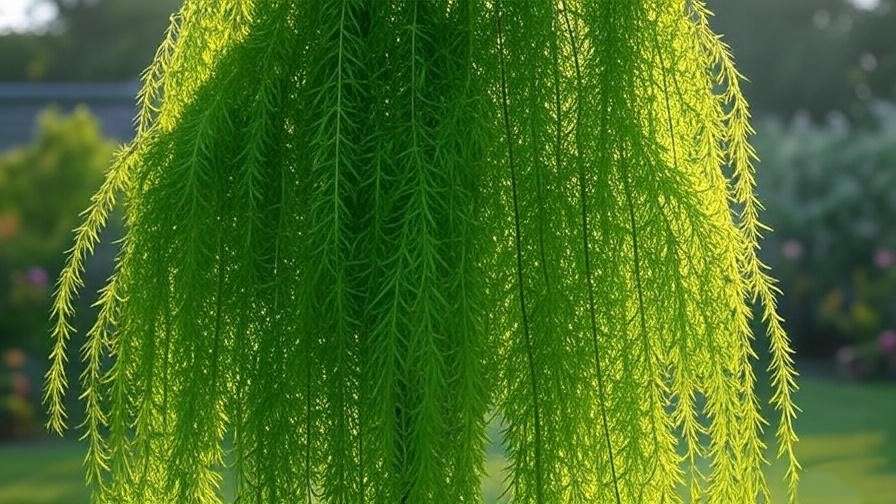Imagine a garden where graceful branches cascade like a living waterfall, casting dappled shade and a sense of tranquility. This is the magic of a weeper tree, a stunning addition to any landscape that captivates with its drooping elegance. Whether you’re dreaming of a Weeping Willow swaying by a pond or a Weeping Cherry bursting with spring blooms, caring for a weeper tree requires knowledge and dedication. As a certified arborist with over 15 years of experience in tree care, I’ve helped countless gardeners nurture these beauties to thrive. This comprehensive guide will equip you with expert tips to plant, maintain, and troubleshoot your weeper tree, ensuring vibrant health and breathtaking growth for years to come.
What is a Weeper Tree? Understanding the Basics 🌲
Defining Characteristics of Weeper Trees
Weeper trees, often called weeping trees, are defined by their distinctive drooping branches that create a cascading, umbrella-like silhouette. This unique growth pattern sets them apart from upright trees, making them a focal point in any garden. Popular species include the Weeping Willow (Salix babylonica), known for its sweeping, flexible branches; the Weeping Cherry (Prunus pendula), celebrated for its delicate pink blossoms; and the Weeping Birch (Betula pendula), prized for its silvery bark and hardy nature. These trees evoke a sense of calm and elegance, making them a favorite for homeowners and landscapers alike.
Why Choose a Weeper Tree for Your Garden?
Weeper trees offer more than just aesthetic appeal. They provide ample shade, enhance privacy, and add a dramatic flair to landscapes. Their cascading branches can soften hardscapes, making them ideal near patios or water features. However, their specific care needs—such as ample water for willows or precise pruning for cherries—require commitment. For gardeners willing to invest time, weeper trees reward with unmatched beauty and a serene ambiance that transforms outdoor spaces.
Choosing the Right Weeper Tree for Your Garden 🏡
Popular Weeper Tree Varieties
Selecting the right weeper tree depends on your garden’s size, climate, and aesthetic goals. Here’s a quick overview of popular varieties:
| Variety | Size | Climate Suitability | Care Level |
| Weeping Willow | 30-50 ft tall, wide spread | Zones 6-8, loves water | Moderate |
| Weeping Cherry | 15-25 ft tall, compact | Zones 5-8, temperate | Moderate |
| Weeping Birch | 20-40 ft tall, slender | Zones 2-7, cold-hardy | Low-Moderate |
- Weeping Willow: Ideal for large yards with moist soil, this fast-growing tree thrives near water but requires space for its expansive roots.
- Weeping Cherry: Perfect for smaller gardens, its spring blooms and compact size make it a showstopper.
- Weeping Birch: Hardy and adaptable, it’s a great choice for colder climates with well-drained soil.
Factors to Consider Before Planting
Before choosing a weeper tree, evaluate your garden’s conditions:
- Climate: Check your USDA Hardiness Zone
- Space: Ensure enough room for the tree’s mature size, including root spread (e.g., willows have aggressive roots).
- Soil: Most weeper trees prefer well-drained, loamy soil with a pH of 6.0-7.5.
- Sunlight: Full sun (6+ hours daily) is ideal, though some varieties tolerate partial shade.
- Wind Protection: Delicate branches need shelter from strong winds to prevent breakage.
Planting Your Weeper Tree: Step-by-Step Guide 🌱
When and Where to Plant
The best time to plant weeper trees is in early spring or fall when temperatures are mild, allowing roots to establish before extreme weather. Choose a site with:
- Full sun or partial shade, depending on the species.
- Well-drained soil to prevent root rot.
- Ample space away from structures, as roots (especially willows) can damage foundations or pipes.
How to Plant a Weeper Tree
Follow these steps for successful planting:
- Test and Prepare the Soil: Use a soil test kit to check pH and nutrient levels. Amend with compost if needed to achieve a pH of 6.0-7.5.
- Dig the Hole: Make it twice as wide and as deep as the root ball to encourage root spread.
- Position the Tree: Place the tree in the hole, ensuring the root collar is level with the ground. Spread roots gently.
- Backfill and Water: Fill with a mix of native soil and compost, then water deeply to settle the soil.
- Mulch: Apply a 2-3 inch layer of organic mulch (e.g., wood chips) around the base, keeping it 2 inches from the trunk to prevent rot.
- Expert Tip: Stake young trees with a flexible system to support their drooping branches against wind for the first 1-2 years.
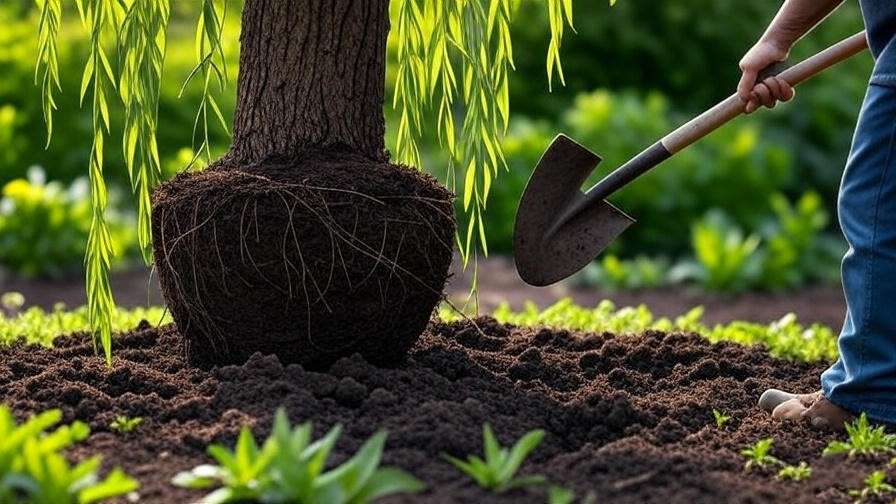
Essential Care Tips for Weeper Trees 🌿
Watering Requirements
Weeper trees, especially Weeping Willows, thrive in moist conditions but vary by species:
- Weeping Willow: Water deeply 1-2 times per week, ensuring soil stays consistently moist but not waterlogged.
- Weeping Cherry/Birch: Water weekly during the first year, reducing frequency as roots establish.
- Signs of Imbalance: Yellowing leaves may indicate overwatering, while wilting suggests underwatering. Use a moisture meter for precision.
- Deep watering (soaking the top 12-18 inches of soil) promotes strong root growth.
Pruning for Health and Aesthetics
Pruning is essential to maintain the weeper tree’s shape, remove deadwood, and prevent disease:
- When to Prune: Late winter or early spring, before new growth begins, is ideal for most species.
- Tools: Use sharp, sanitized bypass pruners or loppers to avoid tearing branches.
- Technique:
- Remove dead, damaged, or crossing branches.
- Thin crowded areas to improve air circulation.
- Shape the canopy to enhance the cascading effect, cutting just above a bud at a 45-degree angle.
- Common Mistake: Avoid over-pruning, which can stress the tree and reduce its vigor.
- Example: For a Weeping Cherry, focus on removing inward-growing branches to maintain an open, flowing structure.
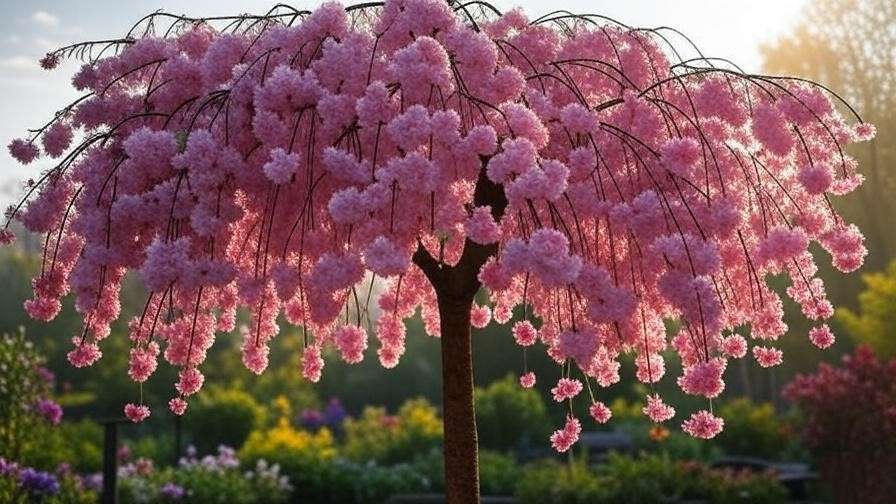
Fertilizing for Vibrant Growth
Fertilizing supports healthy growth but must be done carefully:
- Type: Use a balanced, slow-release fertilizer (e.g., 10-10-10) or organic compost.
- Timing: Apply in early spring, just before bud break, and optionally in early summer for young trees.
- Method: Spread fertilizer evenly around the drip line (the area under the outer edge of the canopy), then water thoroughly.
- Soil Testing: Conduct annual soil tests to avoid over-fertilization, which can burn roots or promote weak growth.
Mulching and Soil Care
Mulching conserves moisture, suppresses weeds, and regulates soil temperature:
- Materials: Use organic mulch like bark, wood chips, or compost.
- Depth: Apply a 2-4 inch layer, keeping it away from the trunk to prevent rot.
- Maintenance: Refresh mulch annually and aerate soil lightly to prevent compaction.
- Adding compost yearly boosts soil fertility and supports beneficial microbes.
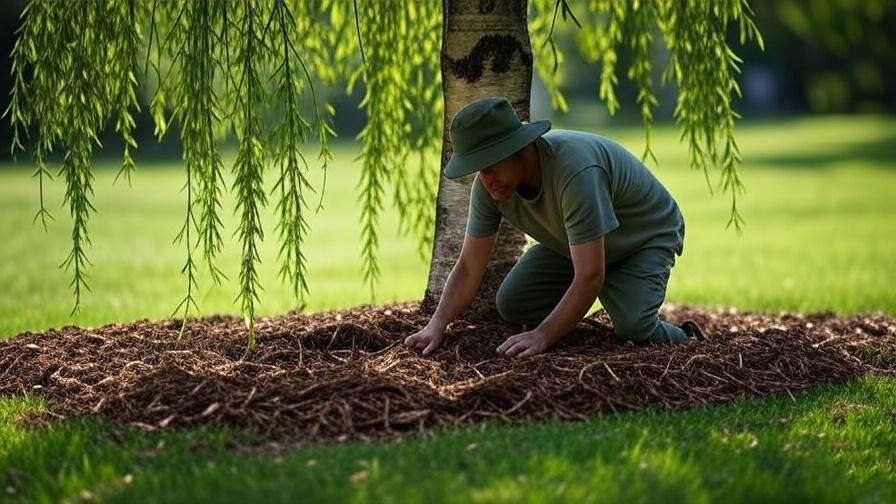
Common Problems and Solutions for Weeper Trees 🐛
Pest and Disease Management
Weeper trees are susceptible to pests and diseases, but proactive care minimizes risks:
- Common Pests:
- Aphids: Cause leaf curl; control with neem oil or insecticidal soap.
- Caterpillars: Eat foliage; remove manually or use Bacillus thuringiensis (Bt).
- Scale Insects: Appear as small bumps on branches; treat with horticultural oil.
- Common Diseases:
- Powdery Mildew: White coating on leaves; improve air circulation and apply fungicide if severe.
- Root Rot: Caused by poor drainage; ensure proper soil conditions and avoid overwatering.
- Leaf Spot: Dark spots on leaves; remove affected foliage and apply a copper-based fungicide.
- Prevention: Regularly inspect trees, maintain proper spacing, and clean up fallen debris to reduce disease spread.
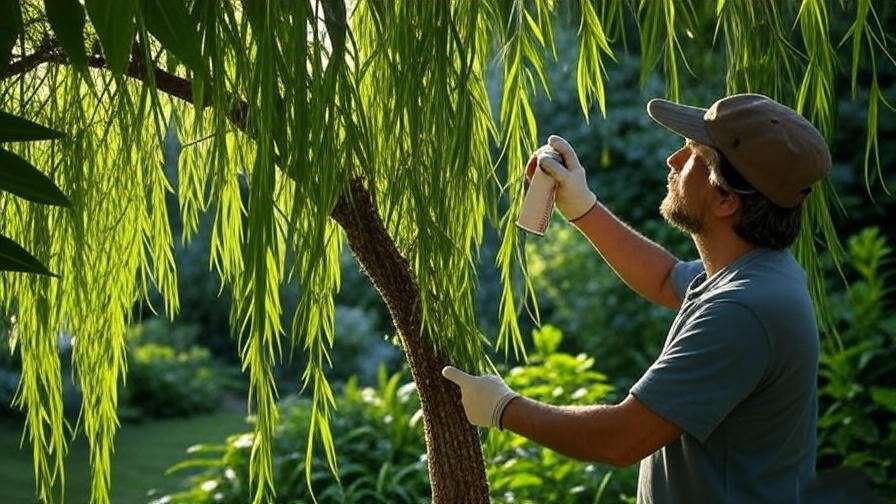
Addressing Environmental Stress
Weeper trees can suffer from environmental factors:
- Drought: Water deeply during dry spells and mulch to retain moisture.
- Poor Drainage: Install drainage systems or choose well-drained sites.
- Extreme Temperatures: Protect young trees with burlap wraps in winter or shade cloth in summer.
- Signs of Stress: Look for yellowing leaves, drooping branches beyond normal, or stunted growth. Address promptly to prevent long-term damage.
- Case Study: A gardener in Zone 7 revived a struggling Weeping Cherry by improving drainage with raised beds and applying a balanced fertilizer after a soil test.
Root System Challenges
Weeping Willows, in particular, have aggressive roots that can invade water lines or foundations:
- Prevention: Plant at least 50 feet from structures or install root barriers (plastic or metal sheets buried 2-3 feet deep).
- Monitoring: Check for signs of root damage, like cracked pavement or slow-draining pipes.
- Solution: Consult a professional arborist for root pruning if issues arise.
Seasonal Care for Weeper Trees 🍂
Spring Care
- Fertilizing: Apply a slow-release fertilizer to kickstart growth.
- Pruning: Remove winter-damaged branches and shape the canopy.
- Pest Check: Inspect for early signs of aphids or caterpillars.
Summer Care
- Watering: Increase frequency during heatwaves, ensuring deep soil penetration.
- Monitoring: Watch for heat stress (wilting or scorched leaves) and provide shade if needed.
- Mulching: Refresh mulch to retain moisture and cool roots.
Fall Care
- Cleanup: Rake fallen leaves to prevent fungal diseases.
- Watering: Reduce frequency as the tree enters dormancy but ensure soil doesn’t dry out completely.
- Preparation: Apply a final layer of mulch to insulate roots for winter.
Winter Care
- Protection: Wrap young trees in burlap to shield from frost and wind.
- Bark Care: Use tree guards to prevent splitting in freezing temperatures.
- Inspection: Check for structural damage after storms and prune if necessary.
Enhancing Your Landscape with Weeper Trees 🌄
Design Ideas for Weeper Trees
Weeper trees are natural focal points in garden design, their cascading branches creating a dramatic, almost sculptural effect. Here are some ways to integrate them into your landscape:
- Focal Point: Plant a Weeping Willow near a pond or stream to enhance its reflective beauty, or place a Weeping Cherry in the center of a lawn for a vibrant spring display.
- Complementary Plantings: Pair with low-growing shrubs like boxwood or perennials like hostas to contrast the tree’s height and form. Avoid tall plants that compete with the weeper’s silhouette.
- Water Features: Position near a fountain or koi pond to amplify the serene, flowing aesthetic. The drooping branches can frame the water, creating a picturesque scene.
- Pathways and Patios: Use a Weeping Birch along a garden path or near a seating area to provide shade and a sense of enclosure without overwhelming the space.
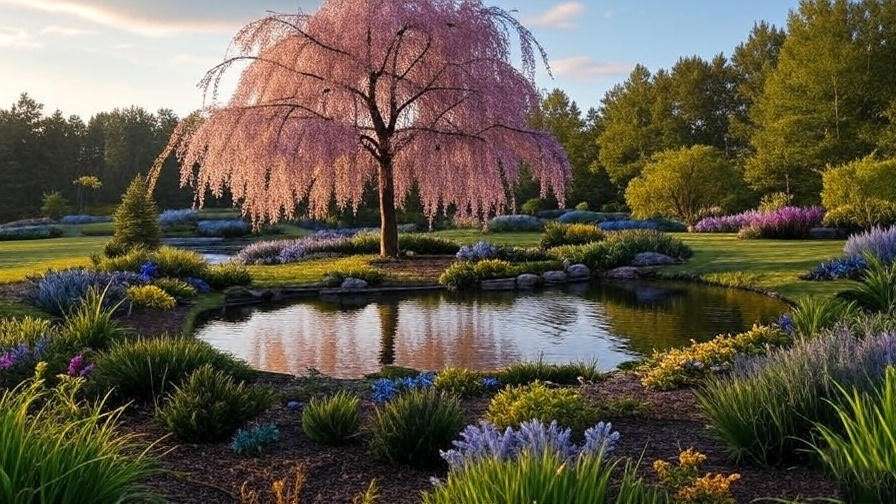
Maintaining Aesthetic Appeal
To keep your weeper tree looking its best:
- Regular Shaping: Lightly prune annually to maintain the cascading form, removing any upright shoots that disrupt the weeping structure.
- Avoid Overcrowding: Ensure nearby plants or structures don’t obstruct the tree’s natural spread. For example, keep at least 10-15 feet of clear space around a Weeping Cherry.
- Cleanliness: Rake up fallen leaves or petals to maintain a tidy appearance and prevent pest habitats.
Expert Insights: Secrets to Thriving Weeper Trees 🌟
As a certified arborist, I’ve seen weeper trees transform gardens when given the right care. Here are advanced tips to elevate your tree’s health:
- Mycorrhizal Fungi: Apply mycorrhizal inoculants during planting to enhance root nutrient uptake. These beneficial fungi form a symbiotic relationship with roots, improving water and nutrient absorption.
- Soil Aeration: Use a garden fork to gently aerate compacted soil around the tree’s drip line annually. This promotes oxygen flow to roots without disturbing them.
- pH Monitoring: Regularly test soil pH, as weeper trees thrive in slightly acidic to neutral soil (6.0-7.5). Adjust with sulfur or lime if needed.
- Myth Debunked: A common misconception is that all weeper trees, like Weeping Willows, need constant water. While willows love moisture, overwatering can harm species like Weeping Birch, leading to root rot.
Expert Quote: “Weeper trees are like living art,” says Dr. Emily Harper, a renowned arborist with 20 years of experience. “Their beauty lies in their structure, but their health depends on consistent, informed care—especially pruning and soil management.”
FAQs About Weeper Tree Care ❓
How Fast Do Weeper Trees Grow?
Growth rates vary by species. Weeping Willows are fast-growing, adding 3-4 feet per year in ideal conditions. Weeping Cherries and Birches grow more slowly, typically 1-2 feet annually.
Can Weeper Trees Survive in Small Yards?
Yes, compact varieties like Weeping Cherry or dwarf Weeping Mulberry are excellent for smaller spaces, requiring only 10-15 feet of spread. Avoid Weeping Willows in small yards due to their aggressive roots and large size.
What’s the Best Way to Prevent Root Damage to Nearby Structures?
Plant Weeping Willows at least 50 feet from buildings or pipes, and consider root barriers. For other species, maintain a 15-20 foot buffer and monitor root growth annually.
How Do I Know If My Weeper Tree Is Healthy?
Look for vibrant leaves, steady growth, and a balanced canopy. Warning signs include yellowing leaves, sparse foliage, or excessive branch dieback, which may indicate stress or disease.
Are Weeper Trees High-Maintenance?
Weeping Willows require moderate maintenance due to their water and pruning needs. Weeping Cherries and Birches are lower-maintenance but still need regular care to thrive.
Conclusion: Your Path to a Thriving Weeper Tree 🌳
Caring for a weeper tree is a rewarding journey that blends art and science. By choosing the right species, planting thoughtfully, and following consistent care practices—watering, pruning, fertilizing, and monitoring—you can cultivate a stunning, healthy tree that elevates your garden’s beauty. Whether it’s the flowing branches of a Weeping Willow or the delicate blooms of a Weeping Cherry, your weeper tree will thrive with dedication. Start today by assessing your garden’s conditions, and don’t hesitate to consult a local arborist for personalized advice. Share your weeper tree journey in the comments below, or explore our related articles on tree care for more inspiration!

